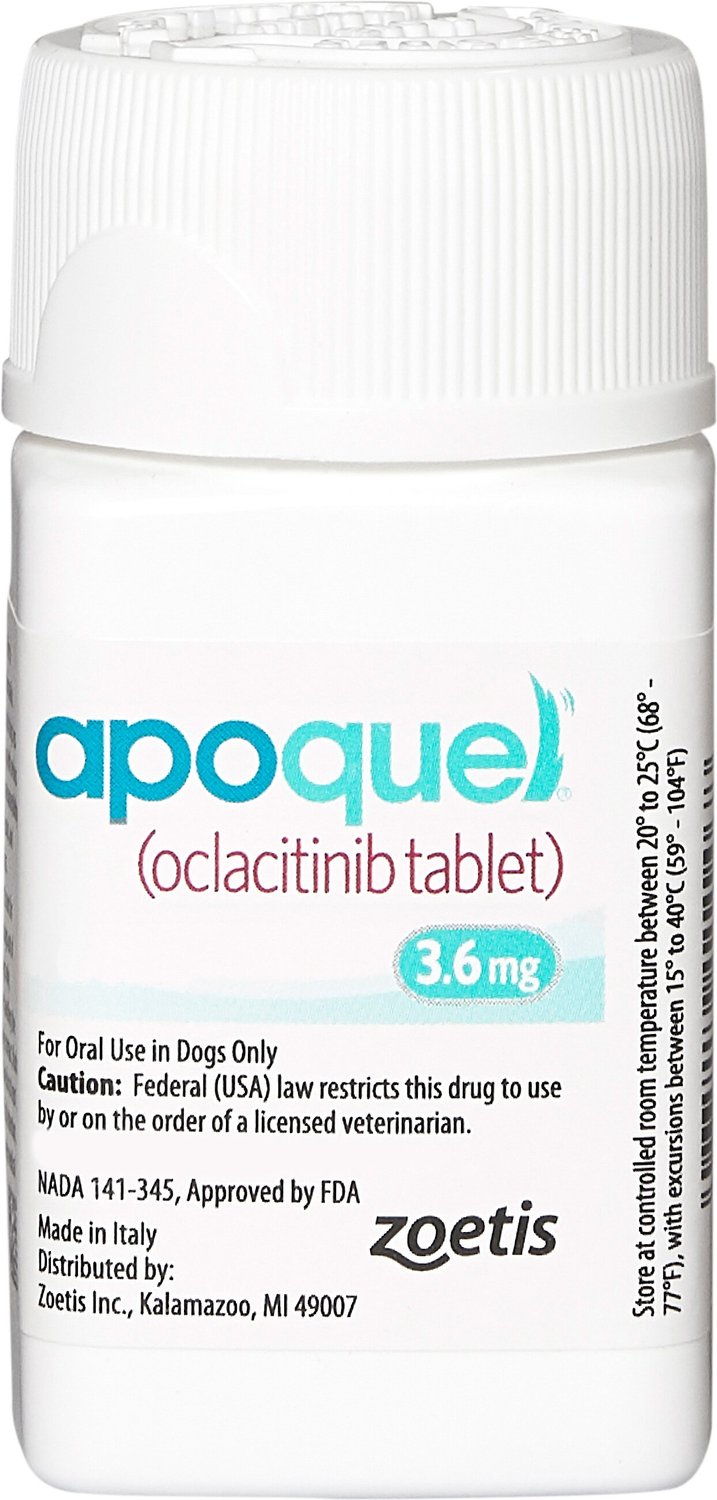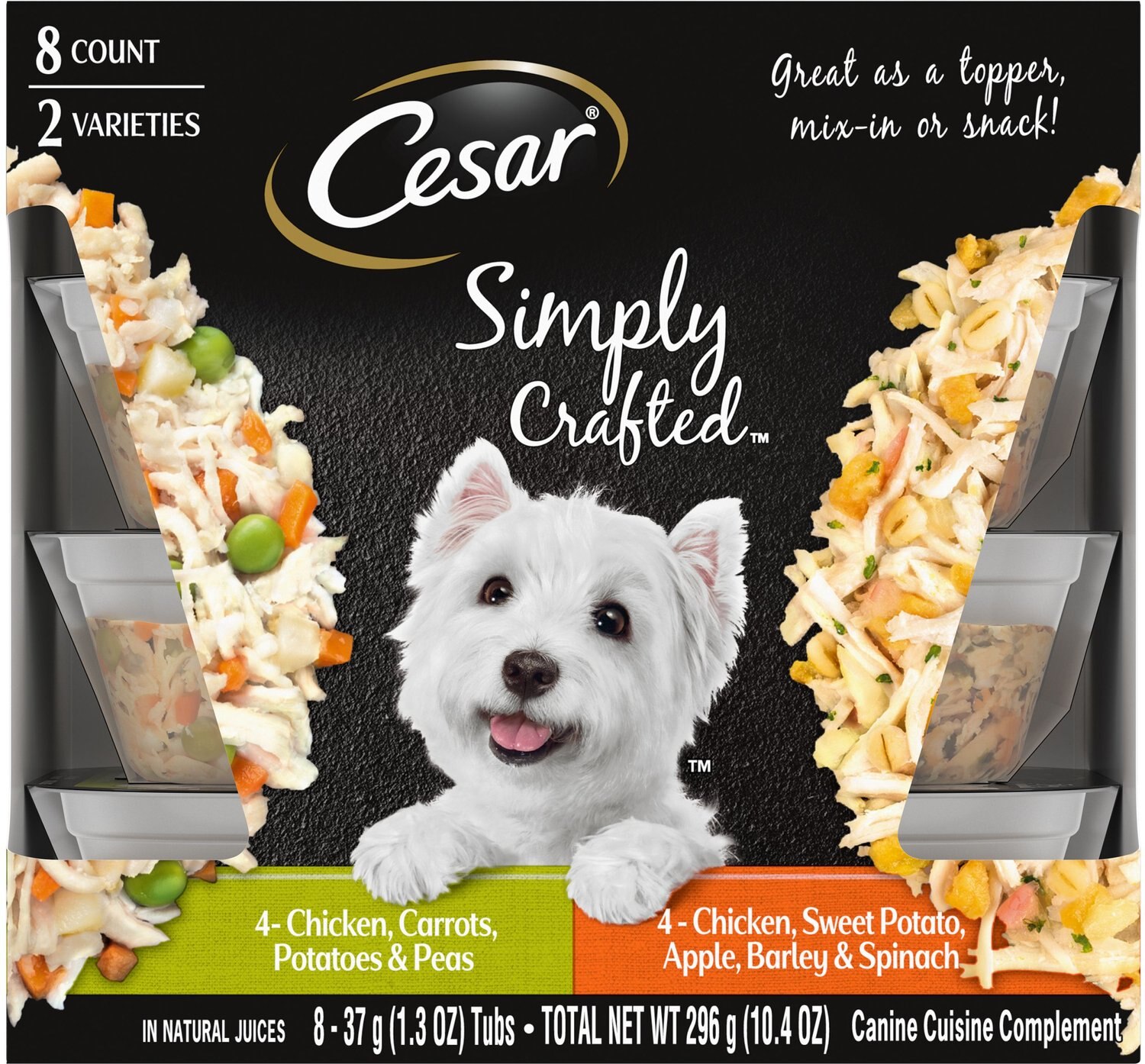Cesar Classic Loaf in Sauce Beef Recipe, Filet Mignon, Grilled Chicken, & Porterhouse Steak Flavors Variety Pack Dog Food Trays, 3.5-oz, case of 24
Made free from grains and with US Chicken or US Beef as the #1 ingredient. Complete with vitamins and minerals to keep pups of all sizes stay healthy. Mouth-watering flavors and textures are irresistible even for the pickiest eaters.
Give your foodie pups a hi-brow treat with Canine Cuisine Wet Dog Food Variety Pack, which features US Beef or US Chicken as the #1 ingredient. Perfect for large or small dogs, the gourmet taste and smell will delight even the pickiest of pals. Canine Cuisine Classic Loaf in sauce Variety Pack Dog Food treats your pup to a delicious classic loaf in sauce texture. These formulas are enhanced with vitamins and minerals, which means every single-serve tray is part of a balanced and complete diet. They’re perfect to serve your pal as a meal on their own or as a delicious dry food topper. Plus, the convenient trays have easy peel-away freshness seals to make mealtime a snap.
Key Benefits
- Made free from grains and with US Chicken or US Beef as the #1 ingredient
- Complete with vitamins and minerals to keep pups of all sizes stay healthy.
- Mouth-watering flavors and textures are irresistible even for the pickiest eaters.
- Made in the USA with the world’s finest ingredients.
- Convenient trays have easy peel-away freshness seals to make mealtime a snap.
Additional information
| Ingredients | Beef: Beef, Chicken Liver, Beef Lung, Chicken Broth, Water, Pork By-Products, Chicken Heart, Calcium Carbonate, Sodium Tripolyphosphate, Added Color, Carrageenan, Potassium Chloride, Xanthan Gum, Magnesium Proteinate, Dried Yam, Natural Flavor, dl-Methionine, Salt, Erythorbic Acid (Preservative), Guar Gum, Zinc Sulfate, Vitamin E Supplement, Monocalcium Phosphate, Sodium Nitrite (For Color Retention), Copper Sulfate, Thiamine Mononitrate (Vitamin B1), d-Calcium Pantothenate, Vitamin D3 Supplement, Potassium Iodide. Filet Mignon: Beef, Chicken Liver, Beef Lung, Chicken Broth, Water, Pork By-Products, Chicken Heart, Calcium Carbonate, Added Color, Sodium Tripolyphosphate, Carrageenan, Potassium Chloride, Xanthan Gum, Magnesium Proteinate, Dried Yam, dl-Methionine, Salt, Erythorbic Acid (Preservative), Filet Mignon Flavor, Guar Gum, Natural Flavor, Zinc Sulfate, Vitamin E Supplement, Monocalcium Phosphate, Sodium Nitrite (For Color Retention), Copper Sulfate, Thiamine Mononitrate (Vitamin B1), d-Calcium Pantothenate, Vitamin D3 Supplement, Potassium Iodide. Grilled Chicken: Chicken, Chicken Liver, Beef Lung, Chicken Broth, Water, Pork By-Products, Chicken Heart, Calcium Carbonate, Sodium Tripolyphosphate, Carrageenan, Potassium Chloride, Xanthan Gum, Magnesium Proteinate, Dried Yam, Added Color, dl-Methionine, Salt, Erythorbic Acid (Preservative), Grilled Chicken Flavor, Guar Gum, Natural Flavor, Zinc Sulfate, Vitamin E Supplement, Monocalcium Phosphate, Copper Sulfate, Thiamine Mononitrate (Vitamin B1), Sodium Nitrite (For Color Retention), d-Calcium Pantothenate, Vitamin D3 Supplement, Potassium Iodide. Porterhouse Steak: Beef, Chicken Liver, Beef Lung, Chicken Broth, Water, Pork By-Products, Chicken Heart, Calcium Carbonate, Added Color, Sodium Tripolyphosphate, Carrageenan, Potassium Chloride, Xanthan Gum, Magnesium Proteinate, Dried Yam, dl-Methionine, Salt, Erythorbic Acid (Preservative), Porterhouse Steak Flavor, Guar Gum, Natural Flavor, Zinc Sulfate, Vitamin E Supplement, Monocalcium Phosphate, Sodium Nitrite (For Color Retention), Copper Sulfate, Thiamine Mononitrate (Vitamin B1), Calcium Pantothenate, Vitamin D3 Supplement, Potassium Iodide. |
|---|---|
| Caloric Content | Beef: 912 kcal/kg, 91 kcal/tray Filet Mignon: 912 kcal/kg, 91 kcal/tray Grilled Chicken: 1053 kcal/kg, 105 kcal/tray Porterhouse Steak: 912 kcal/kg, 91 kcal/tray |






by Oaklee
I have 3 dogs, the old man eats his Cesar straight up, the adult female eats adult kibble mixed with Cesar, and the new puppy gets puppy kibble mixed with Cesar. I split one container 3 ways for them – the first two are tiny dogs, the puppy is large. They eat this way twice a day. They love the Cesar, but I love the fact that it doesn’t smell like wet dog food. That smell normally makes me gag, but Cesar has a more pleasant, real food smell. I didn’t taste it but they like it so I don’t have to!
by Bruno
My dogs love them. There is nothing left on their plates.
by Luke
My dog is very picky, so I bought this and he loves it.
by Mary
Wonderful service and prices. just what is missing nowadays.
by Joe
My dog loves the variety and the flavor. Never any left in her bowl.
by Pete
Pete is on uninary food. He refuses to eat. I mix a small amount of the Little Caesars into his dish. He will eat everything.
by Pug
My boys usually like these, right now they are being picky. Right now they like us to mix the beef with the chicken. When we give them these randomly as a treat in their normal food, they love them.
by Linda
I’ve tried several different small dog wet foods for my Keycha. After a few meals, she turned up her nose. Since she gets her meds in her food this has been a concern. Finally. Cesar’s variety pack struck gold.